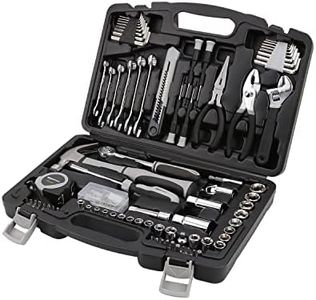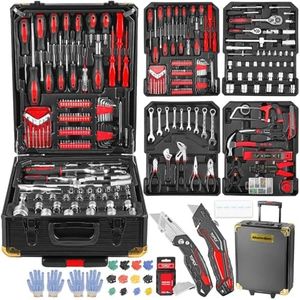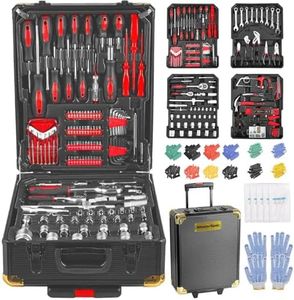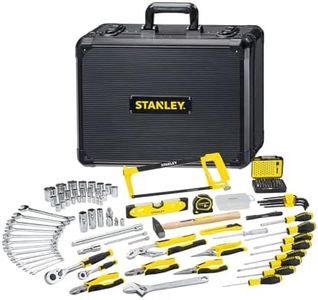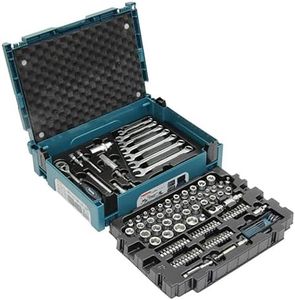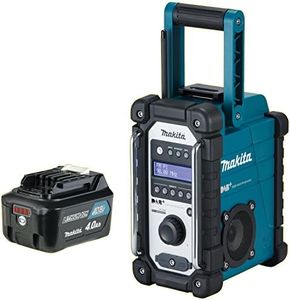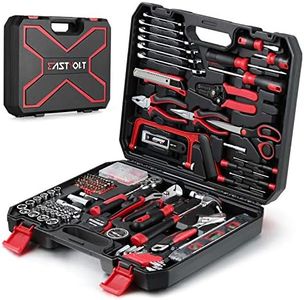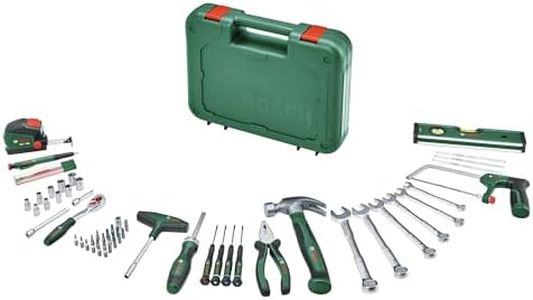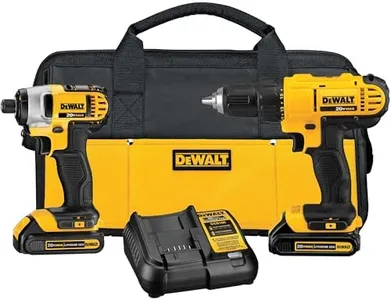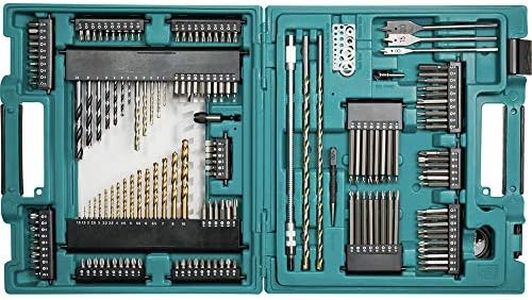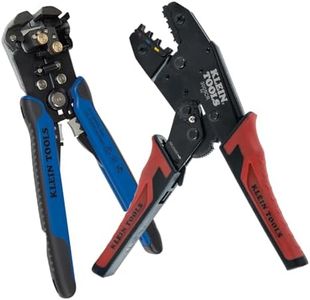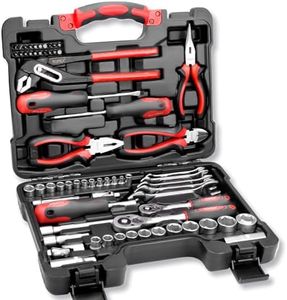We Use CookiesWe use cookies to enhance the security, performance,
functionality and for analytical and promotional activities. By continuing to browse this site you
are agreeing to our privacy policy
10 Best Household Tool Kits
From leading brands and best sellers available on the web.Buying Guide for the Best Household Tool Kits
Choosing the right household tool kit can make home repairs and DIY projects much easier and more satisfying. A good kit should cover your basic needs, be comfortable to use, and last for years. Focus on what tasks you’re most likely to encounter at home, whether it’s hanging pictures, assembling furniture, or fixing a leaky faucet. It’s best to find a balance between enough useful tools without the extras that just take up space. Think about what you’ll really use rather than getting swept away by big, impressive-looking sets.Number and Type of ToolsThis refers to how many and which specific tools are included in the kit. It’s a basic indicator of how versatile the kit will be. Smaller sets usually focus on the essentials such as a hammer, screwdrivers, tape measure, and pliers. Larger sets might include wrenches, utility knives, levels, or more specialized tools. If your needs are simple, a smaller set is easier to store and quicker to sort through. If you anticipate a variety of tasks, make sure common tools are included—just avoid too many rarely-used items. Consider what repairs or jobs you often face to judge the right mix for you.
Tool Quality and MaterialsTool quality is about the durability and feel of each item—usually shaped by the materials used, such as hardened steel or high-impact plastics. Cheaper kits may look the part but break or strip easily, while higher-quality tools typically last longer and perform better. Heavier, sturdy tools with comfortable grips are often signs of better construction. If you plan to use the tools regularly or for tougher tasks, invest in higher quality. For light, occasional use, mid-range materials may be fine.
Case and PortabilityThe toolbox or carrying case is what keeps your tools organized and easy to find. A good case should hold everything securely and be easy to carry around the house. Some cases have molded slots for each tool, while others are just compartments. If you want to keep things tidy and transport tools easily, look for a strong, well-designed case that fits your storage space. If you’ll mostly use tools in one room, a simpler case may do.
Ergonomics and ComfortThis measures how comfortable the tools are to hold and use—important for tasks that take longer or require force. Ergonomic handles and non-slip grips can make a big difference in your experience, especially if you have smaller hands or grip issues. If you know you’ll be using tools for extended periods or have comfort concerns, make sure to pick a kit with ergonomic handles and test the grip for yourself whenever possible.
Accessory SelectionAccessories like extra screwdriver bits, utility blades, fasteners or measuring tape add versatility to a kit, allowing you to tackle a range of jobs. The right balance of accessories means you’re prepared without overcomplicating the kit. If you anticipate diverse or specific home projects, check which extras are included. For basic repairs, a handful of well-chosen accessories is often sufficient.

